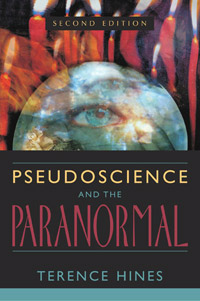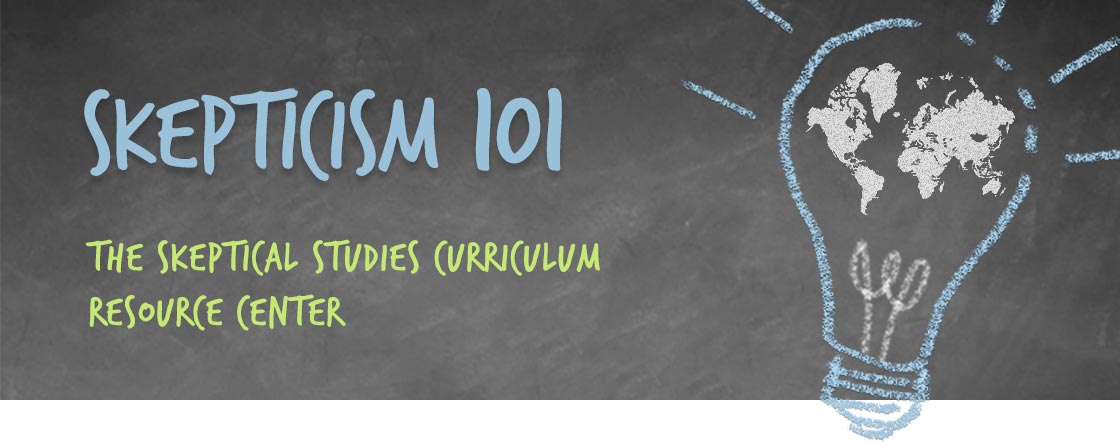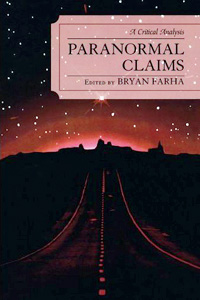You Are Browsing Resources on:
astrology
This PowerPoint is part of a course titled, “Science Skepticism & Weird Behavior.”
SCIENCE, THEORY, AND PARADIGM SHIFTS
There are three lectures in this series, they are intended to educate students about the nature of science and the power of natural explanations. This is accomplished through the concept of the Paradigm Shift. The discussion begins with non-scientific views of nature and then follows the development of scientific views and how/why they changed over many hundreds of years. This post concerns the third lecture in the series.
Examples of paradigm shifts covered in the lecture series include:
- the shift from supernatural to nature interpretations of comets.
- the shift from astrology (Ptolemaic) to astronomy (Copernican revolution).
- the development of Copernican cosmology to a synthesis called Newtonian physics.
- the shift from Newtonian physics into Relativity Theory.
Lecture 3 – PARADIGM SHIFT 3
This lecture is a continuation of the previous lecture where the paradigm shift from Newtonian physics to the theory of relativity is discussed. The lecture ends with a discussion of the cosmic microwave background and what the various differences in temperature could mean.
DOWNLOAD THIS RESOURCE
(16.5 MB Powerpoint Presentation)
Lecture 1 – PARADIGM SHIFT 1
You can find the first lecture in the series here.
Lecture 2 – PARADIGM SHIFT 2
You can find the second lecture in the series here.
This PowerPoint is part of a course titled, “Science Skepticism & Weird Behavior.”
SCIENCE, THEORY, AND PARADIGM SHIFTS
There are three lectures in this series, they are intended to educate students about the nature of science and the power of natural explanations. This is accomplished through the concept of the Paradigm Shift. The discussion begins with non-scientific views of nature and then follows the development of scientific views and how/why they changed over many hundreds of years. This post concerns the second lecture in the series.
Examples of paradigm shifts covered in the lecture series include:
- the shift from supernatural to nature interpretations of comets.
- the shift from astrology (Ptolemaic) to astronomy (Copernican revolution).
- the development of Copernican cosmology to a synthesis called Newtonian physics.
- the shift from Newtonian physics into Relativity Theory.
Lecture 2 – PARADIGM SHIFT 2
This lecture introduces the concept of scientific paradigm shifts, the concept of empiricism, the concept of anomalies and the concept of synthesis. These concepts are discussed in the context of a paradigm shift called the Copernican and the Newtonian Revolutions.
DOWNLOAD THIS RESOURCE
(20.6 MB Powerpoint Presentation)
Lecture 1 – PARADIGM SHIFT 1
You can find the first lecture in the series here.
Lecture 3 – PARADIGM SHIFT 3
You can find the third lecture in the series here.
This PowerPoint is part of a course titled, “Science Skepticism & Weird Behavior.”
SCIENCE, THEORY, AND PARADIGM SHIFTS
There are three lectures in this series, they are intended to educate students about the nature of science and the power of natural explanations. This is accomplished through the concept of the Paradigm Shift. The discussion begins with non-scientific views of nature and then follows the development of scientific views and how/why they changed over many hundreds of years. This post concerns the first lecture in the series.
Examples of paradigm shifts covered in this lecture series include:
- the shift from supernatural to nature interpretations of comets.
- the shift from astrology (Ptolemaic) to astronomy (Copernican revolution).
- the development of Copernican cosmology to a synthesis called Newtonian physics.
- the shift from Newtonian physics into Relativity Theory.
Lecture 1 – PARADIGM SHIFT I
This lecture demonstrates the power of natural explanations over supernatural ones. The main topic is about the various ways that people throughout history have interpreted comets when they appeared in the sky. The lecture beings with a discussion about what we currently know about comets and then transitions into what ancients believed.
Two examples are given initially whereby major players in history misinterpreted the appearance of a famous comet (Halley’s comet) as a sign from god to fulfill their destiny. The first example was Genghis Cohn who began his invasion of the west after comet Halley appeared in the sky, the second was William the Conqueror who invaded England in 1066 after seeing comet Halley appear in the sky.
A third and final example is given whereby a person saw Halley’s comet in the sky but didn’t leap to a supernatural conclusion. This person was Sir Issac Newton and his interpretation of the comet was quite different because he assumed that the comet was natural. By asking simple, empirical, questions about the nature of the comet, Newton, with the help of Edmund Halley, was able to make a prediction the comet would one day return. Comet Halley did return just as Newton and Halley predicted thus proving that comets were not supernatural but are 100% natural just like the planets and other celestial bodies.
DOWNLOAD THIS RESOURCE
(6.3 MB Powerpoint Presentation)
Lecture 2 – PARADIGM SHIFT 2
You can find the second lecture in the series here.
Lecture 3 – PARADIGM SHIFT 3
You can find the third lecture in the series here.
This course was taught at the California State University, Northridge during the fall 2010 semester.
Excerpt from Syllabus
One of the characteristics of contemporary American popular discourse is a marked increase in irrationalism. Belief in the paranormal, pseudoscience, and millenialism is perhaps more prevalent than at any other time in the history of Western Civilization. This course seeks to test these beliefs through the application of rhetorical analysis and critical thinking to discourse advancing extraordinary claims.
Learning Goals
Upon successful completion of this course, the students will be able to:
- Identify extraordinary claims in popular discourse.
- Identify the types of appeals, including forms of reasoning and evidence, used to advance extraordinary claims in popular discourse.
- Assess the strength of rhetoric advancing extraordinary claims.
- Prepare critical analyses and refutations of rhetoric advancing extraordinary claims.
DOWNLOAD THIS RESOURCE
(118 kb PDF)
This book was required reading for “Why We Believe Weird Things: Science and Pseudoscience in Psychology” taught by Dr. Jeffrey Brookings and for “Parapsychology & the Occult” taught by Dr. Terence Hines.

Popular culture fills the mind with a steady diet of fantasy, from tales of UFO landings and alien abductions, haunted houses, and communication with the dead to claims of miraculous cures by spiritual healers and breakthrough treatments in ‘alternative’ medicine. The paranormal – and the pseudoscience that attempts to validate it – is so ubiquitous that many people lose sight of the distinction between the real and the imaginary, and some never learn to make the distinction in the first place. In this updated and expanded edition of “Pseudoscience and the Paranormal”, the most comprehensive and up-to-date work of its kind, psychologist and neuroscientist Terence Hines explores the question of evidence for the paranormal and delves beyond it to one that is even more puzzling: Why do people continue to believe in the reality of the supernatural despite overwhelming evidence that it does not exist? Devoting separate chapters to psychics, life after death, parapsychology, astrology, UFOs, faith healing, alternative medicine, and many other topics, Hines examines the empirical evidence supporting these popular paranormal and pseudoscientific claims. New to this edition are extended sections on psychoanalysis and pseudopsychologies, especially recovered memory therapy, satanic ritual abuse, and facilitated communication. Also included are new chapters on ‘alternative’ medicine and environmental pseudoscience. Critiquing the whole range of current paranormal claims, this carefully researched, thorough review of pseudoscience and the paranormal in contemporary life shows readers how to carefully evaluate such claims in terms of scientific evidence. This scholarly yet readable volume is an invaluable reference work for students and general readers alike. —Amazon
BUY THIS BOOK
from Amazon
This course was taught at the University of Central Oklahoma during the fall 2011 semester
Excerpt from Syllabus
My goal for this course is to have each student leave with increased critical thinking and reasoning skills and the ability to apply those skills in his or her environment. Specifically, this course will teach students how to apply empirical, scientific modes of thinking in explaining the causes of various phenomena, from everyday human behavior to supposedly paranormal events. Students will become skilled in differentiating between scientific and pseudoscientific explanations of things such as psychic abilities, witchcraft, alien abduction, astrology, recovered memories, and the healing properties of various alternative medicines and techniques. In addition, students will come to understand the various ways in which we can be fooled, both by others and by ourselves, thanks to the way the human brain processes information.
DOWNLOAD THIS RESOURCE
(110 kb PDF)
This book was required reading for Dr. Bryan Farha’s course, “Sociology of Belief” taught at Oklahoma City University during spring 2011.
Published in April of 2007, this academic text features articles regarding paranormal, extraordinary, or fringe-science claims. It logically examines the claims of astrology; psychic ability; alternative medicine and health claims; after-death communication; cryptozoology; and faith healing, all from a skeptical perspective. Paranormal Claims is a compilation of some of the most eye-opening articles about pseudoscience and extraordinary claims that often reveal logical, scientific explanations, or an outright scam. These articles, steeped in skepticism, teach critical thinking when approaching courses in psychology, sociology, philosophy, education, or science. —Amazon
BUY THIS BOOK
from Amazon
This course was taught at Griffith University during the spring 2011 semester.
Excerpt from Syllabus
Paranormal beliefs are important, widespread and yet rarely studied. The analysis of those beliefs is both valuable in itself and useful in developing critical and analytical skills. Since both skepticism and the paranormal are defined in relation to science, and are often strongly influenced by science, some elucidation of the nature of science and of its position in society is required. Modern skepticism the science-inspired study of paranormal claims relates both to science and to the paranormal, and seeks to influence media coverage of these issues.
The course aims to elucidate the nature of the three terms in the title and, through the lectures and the seminars, to enable the students to evaluate paranormal claims in skeptical terms. Both the seminars and the take-home exam encourage students to apply skeptical concepts to the paranormal, and to arrive at their own conclusions. The multiple choice examination encourages broad comprehension of key concepts.
Learning Goals
After successfully completing this course students should be able to:
- Understand the nature of skepticism, science and the paranormal and their places in western societies, as shown in an ability to outline their key attributes.
- Understand the intellectual tools of modern skepticism, their ethical dimensions and their applicability to paranormal claims, as shown by an ability to outline these and instance their application to specific cases.
- Have the ability to apply skeptical criteria to selected paranormal and related claims.
- Have the capacity to present the results of analysis in well-structured and logical form.
DOWNLOAD THIS RESOURCE
(283 kb PDF)
This course was taught at Southern Methodist University.
Excerpt from Syllabus
This course will provide students with an understanding of the scientific method sufficient to detect pseudoscience in its many guises: paranormal phenomena, free-energy devices, alternative medicine, intelligent design creationism, and many others. Students will learn to think critically and to question outlandish claims, hype, and outright BS. Students’ writing will improve and they will be able to distinguish credible sources of information from nonsense; students will become intelligent consumers of information. Students should expect to do a lot of reading, writing, and, most of all, thinking.
DOWNLOAD THIS RESOURCE
(377 kb PDF)











